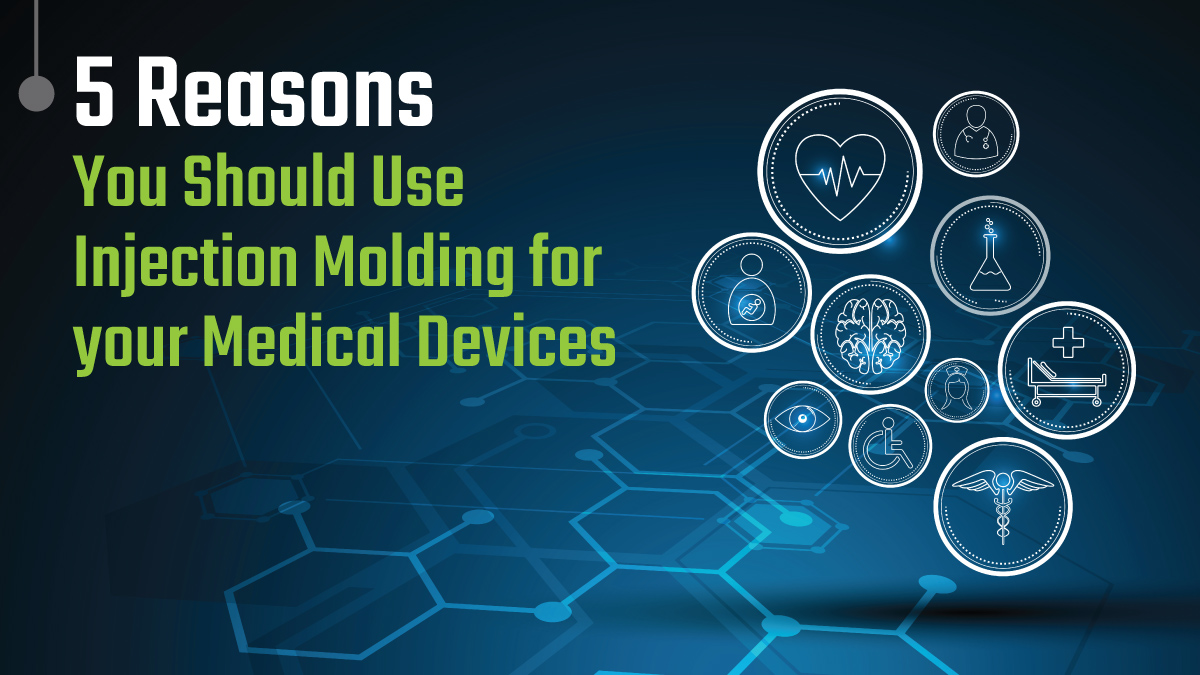
Since its inception, the art of injection-molding has evolved over the years from producing buttons and combs to producing an array of more refined and sophisticated products.
Unlike in the past, when plastic forms were hard to work with, the current injection molding process allows for the production of plastic details with utmost accuracy and precision in dimension and surface.
Medical grade polymers, for instance, have become the preferred material for a huge range of medical devices.
From reduced costs to greater functionality and improved ergonomics, injection molding offers numerous benefits. Read on for the top five benefits!
What Is It?
Injection molding is a simple and reliable method of producing high-precision medical devices for healthcare applications.
Medical practitioners are increasingly transitioning from the conventional molding of devices to the more versatile plastic medical devices produced through injection molding.
These injection molded parts are affordable and allow for greater surgical accuracy and precision. Some of the medical instruments and devices produced by injection molding include:
- Surgical Blades
- Orthopedic Instruments
- Surgical Tools
- Pacemaker Parts
- Suture Delivery Devices
- Needle Housing
- Instrument Handles
- Prosthetics
Medical devices produced by injection molding typically facilitate reduced margins of surgical error.
Here are the top five reasons why you should choose injection molding for medical use:
1. Reduced Device Weight
Weight reduction is one of the many pros offered by injection molded medical devices.
Unlike conventional molding methods, injection-molded polymers have unique mechanical properties that improve medical device performance while significantly reducing the device’s weight.
Injection molding plays a huge role in the production of lightweight medical devices, which helps minimize surgeon fatigue while performing long procedures.
They also offer great convenience for EMTs to carry around while in the field during emergencies.
Lightweight wearable medical devices allow patients who demand continuous monitoring to carry their devices while undertaking their daily duties.
2. Increased Design Flexibility
The injection molding process offers designers far greater design flexibility when molding a plastic part than with other processes.
Injection-molded parts can integrate different features via a single injection, something that would otherwise be costly and multi-step assembly.
The unique design demands of medical molded parts, tools, and equipment require a production process that can handle the intricate design requirements of healthcare applications.
Design flexibility in injection molding enables designers to meet such quality standards and produce medical devices in high-volume for the increased demand.
Injection molding enables designers to create devices with some ease of use features.
Products with great ergonomic design include things such as an easy-grip surface for better handling of the device and reduced vibration during surgeries.
Using more impact, resistant plastics can also reduce the risk of damage to the device due to dropping.
3. Improved Functional Aesthetics
Apart from being small and portable, medical devices should meet new aesthetics standards.
There is an increasing demand for devices that are decorative and appealing to help reduce an institutional appearance. The use of textures and colors can also make devices less formidable.
Injection-molded devices allow for coloration directly within the plastic, or in other cases, natural transparency.
This creates some unique possibilities such as medical equipment can be color-coded for easy identification or enhanced visibility during procedures in the case of transparent polymers.
4. Reduced Sterilization Hassle
Injection molding for the production of medical instruments and devices can incredibly reduce per part cost.
The lower per part cost also comes in wherein the surgical instruments are disposed of rather than sterilized and reused. This reduces contamination risks and the risk of infection as well as the time for preparing a device.
Injection-molded medical products offer natural resistance to contaminants and cleaning chemicals.
This makes plastic molded devices designed for multiple uses able to withstand repeat sterilization cycles with great resilience.
Antimicrobial agents like silver ions are, in some cases mixed into the plastic melt. This leads to the production of medical devices with microbe-resistant surfaces and in turn, longer product life cycles.
These advantages render the ideal process for manufacturing inexpensive, highly efficient, and high-quality medical supplies.
5. Improved X-ray and MRI Compatibility
In terms of patient health, the removal of metals like lead from hospitals is an important development. Tungsten, for instance, can replace lead as a radiation shield.
MRI machines function by generating strong magnetic fields. The magnetic features of metals interfere with the operation of the MRI machine, resulting in inaccurate imaging or even causing discomfort or injury to patients.
Metals are also known for hindering proper penetration of x-rays, which causes poor visualization of underneath bones. Plastic injection molded devices, however, are compatible with both X-ray and MRI machines.
Should You Use Injection Molding for Medical Devices?
Plastic injection molding offers a plethora of benefits than other materials commonly used with medical devices.
Using injection molding for medical devices ensures the components produced hardly need any work afterward.
This is because the parts come having a finished appearance after they are removed from the injection molds.
Injection molding, as seen above, leads to the production of lightweight medical devices, the wider aesthetic design possibility for designers and highly efficient instruments.
It also enables the creation of devices that are suitable for use in a medical environment.
An injection molder with experience in the medical field can offer valuable advice about the use of this process for your medical devices.
Check out our website today for more information on injection molding and how it impacts different industries.
